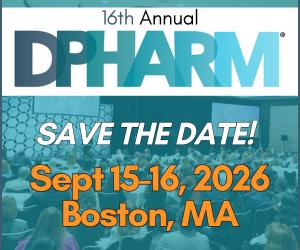Micky Tripathi and Amy Cramer on the Current State of Data Interoperability
Dr Micky Tripathi, National Coordinator Health IT at U.S. Department of Health & Human Services recently spoke about the latest updates of USCDI and TEFCA at DPHARM 2023, and next steps to advance evidence generation systems. Amy Cramer, MMCi, BSN, CPHQ, Clinical Innovation Focus Area Leader: Capitalizing on Data Assets at Johnson & Johnson Innovative Medicine spoke with Dr Tripathi on an industry perspective on data interoperability. The following is a summary of their thoughts while at DPHARM 2023.

What is the status of US health systems capabilities with data capture?
MT: We started off more than a decade ago with very little adoption of electronic health records in the US where around 10% of providers had EHRs. Under President Obama, the passage of the HITECH Act and around $35 billion in incentives were made available for providers to purchase electronic health records. We wanted for Medicare and Medicaid to be able to benefit from those investments.
Now, we have 97% of hospitals and 86% of ambulatory practices across the country on electronic health records. We have a huge digital foundation with potential for the research community to take advantage of, to serve and provide treatments for patients.
What are the next steps for industry?
We need to ask how I can build from that? That's what the Vulcan FHIR accelerator is doing. It is a great way to sort of engage directly and say, “Let's work with the EHRs as they are.”
Electronic health records are certified by ONC. They are required to support the US Core Data for Interoperability (USCDI).There are also opportunities to extend from that. One example is the USCDI+ for Cancer Initiative, which looks at the additional elements that are important for cancer treatment, cancer diagnosis and research purposes. Additionally, all EHR vendors are now required to support FHIR APIs.
"We have a huge digital foundation with potential for the research community to take advantage of, to serve and provide treatments for patients."
What would you like to see industry doing on their end, to connect into the larger data-sharing ecosystem?
I would like to see the research community get together and have some common approaches to things, to avoid each company having their own version of a case report form or informed consent. Every time a small change is made, it makes it that much more difficult to implement and scale.
Addressing consent which is a big obstacle and absolutely required in trials. How do we have consistency in a way that allows for it to be standardized and computable across settings? It’s a big opportunity to come together as a research community, perhaps with the NIH, and come to a consensus. Down the road, perhaps, we could require EHR vendors to support it when it’s mature enough.
The last thing I would point to is deidentification. Do we have standard approaches for how we de-identify data? There are multiple tokenization approaches, but there is more work to be done there, to at least identify the issues related to this across different stakeholders: where is it applicable and what are the opportunities for collaboration. The goal of that would be to get greater consistency and perhaps move the ball on better technical approaches to solve that problem.
"Every time a small change is made, it makes it that much more difficult to implement and scale."
What are you working on now that industry should be aware of and engaged with?
Pursuing particular kinds of data extensions that are important for the research community. We're already working on USCDI+ for cancer, so there is an opportunity in the near term to work with NIH, NCI, etc, and provide feedback on the other indications we should be targeting, and getting industry collaboration together today to extend the data model, in ways that builds on the standards required to be supported in EHR systems today. It was because there was industry collaboration around mCODE™ (Minimal Common Oncology Data Elements) that we were really able to pick up and run with USCDI+ for cancer.
Another near-term opportunity: I would encourage people to either follow Vulcan’s model or participate directly in using FHIR-based approaches to accelerate the use cases we identified before – consistent CRFs, consent, etc. Having a consistent CRF across EHR systems isn’t that difficult technically, it’s just about getting a group of people to agree, “This is what constitutes a CRF. Here is what the business clinical model is for that. Here is what the underlying data model and FHIR technical representation of that is.” Then it’s about testing it to determine when it’s mature enough to scale, using NIH and ONC levers for example.
What can you tell us about the Trust Exchange Framework and Common Agreement?
There are six exchange purposes in the first set of use cases. They don’t yet include research because of the complexities I described – deidentification, informed consent agreement, etc – that we need to tackle before we’re to establish it as the seventh exchange purpose.
However, we’re already looking ahead and working with our colleagues at NIH and FDA to figure out how we can get there. It would allow a research organization to connect to the network where provider organizations and payers are connected, and get access to the types of information that they are currently struggling with. We welcome a collaboration with the industry on that.
What is the latest information on data interoperability, specifically how it might impact running clinical trials?
AC: When we started this work 20 years ago, it was looking at interoperability in one use case of EHR-to-sponsor. What I’ve seen happen in the last 1-2 years have been these other use cases have blossomed and moved so quickly.
One example is the Gravitate-Health project with e-labeling that has made massive progress in a very short period of time. Another project that’s coming through ICH is the digitization of the protocol. All of these use cases operate from the same foundation. That’s exciting: build it once, and reuse it.
"Having different stakeholder voices helps us to create something that will not hopefully generate bottlenecks in one area or additional burden in another."
What would these current use cases mean for future interoperability?
I see a few things coming down the pipeline. Pursuing interoperability has been well-driven within the United States, and I’m seeing other countries moving at a rapid pace.
For example, the e-labeling project was in collaboration with EMA. There is a global effort, which is important as global companies because that is what we have to do to be successful, and not have one-offs in every different geographical region.
It’s exciting to see how the country has come together to make this standard. We may say we’re doing the same things, but the devil is in the details. Small nuances make a big difference.
What is your final message on collaborating for data interoperability?
To be successful in any type of innovation requires having the research community, and all the stakeholders, come together to work through a problem. Having different stakeholder voices helps us to create something that will not hopefully generate bottlenecks in one area or additional burden in another.










